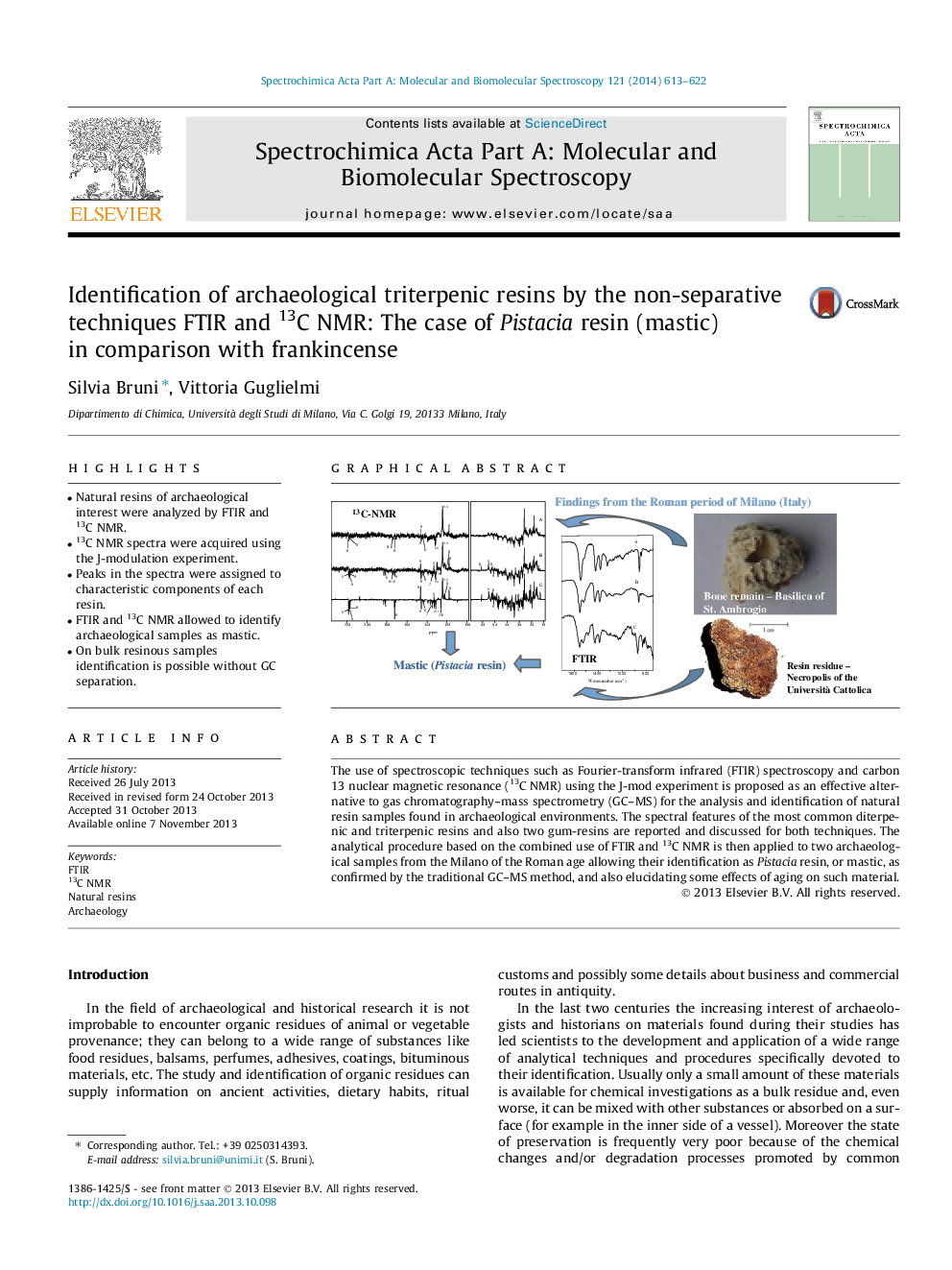| کد مقاله | کد نشریه | سال انتشار | مقاله انگلیسی | نسخه تمام متن |
|---|---|---|---|---|
| 1230514 | 1495247 | 2014 | 10 صفحه PDF | دانلود رایگان |

• Natural resins of archaeological interest were analyzed by FTIR and 13C NMR.
• 13C NMR spectra were acquired using the J-modulation experiment.
• Peaks in the spectra were assigned to characteristic components of each resin.
• FTIR and 13C NMR allowed to identify archaeological samples as mastic.
• On bulk resinous samples identification is possible without GC separation.
The use of spectroscopic techniques such as Fourier-transform infrared (FTIR) spectroscopy and carbon 13 nuclear magnetic resonance (13C NMR) using the J-mod experiment is proposed as an effective alternative to gas chromatography–mass spectrometry (GC–MS) for the analysis and identification of natural resin samples found in archaeological environments. The spectral features of the most common diterpenic and triterpenic resins and also two gum-resins are reported and discussed for both techniques. The analytical procedure based on the combined use of FTIR and 13C NMR is then applied to two archaeological samples from the Milano of the Roman age allowing their identification as Pistacia resin, or mastic, as confirmed by the traditional GC–MS method, and also elucidating some effects of aging on such material.
Figure optionsDownload as PowerPoint slide
Journal: Spectrochimica Acta Part A: Molecular and Biomolecular Spectroscopy - Volume 121, 5 March 2014, Pages 613–622